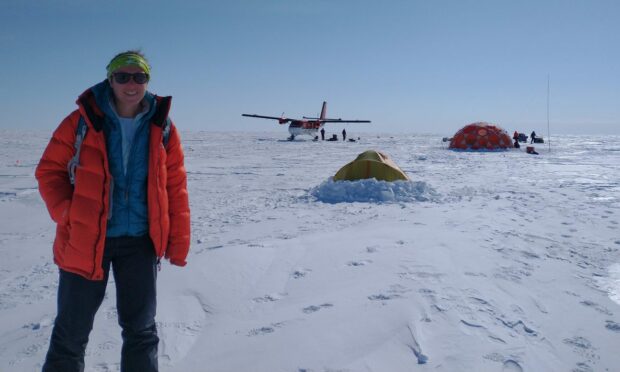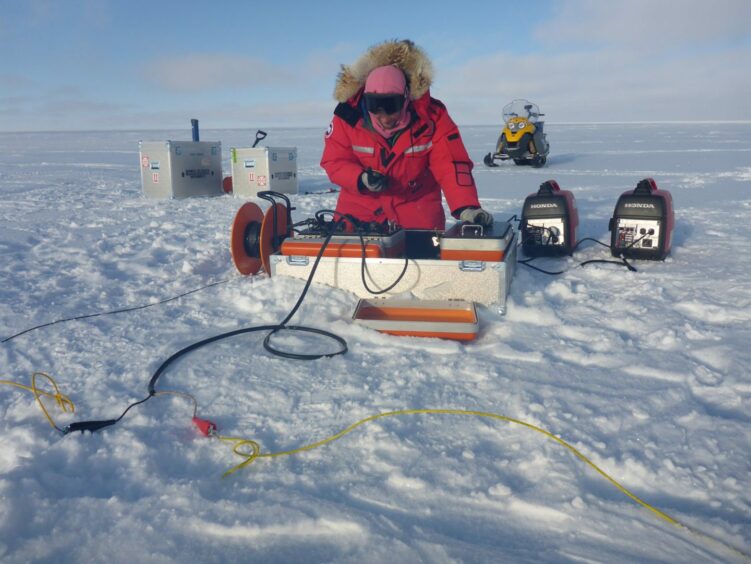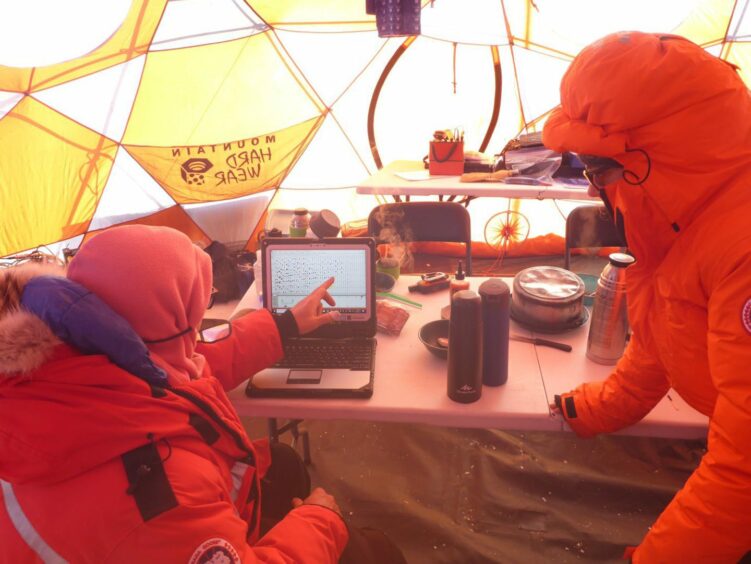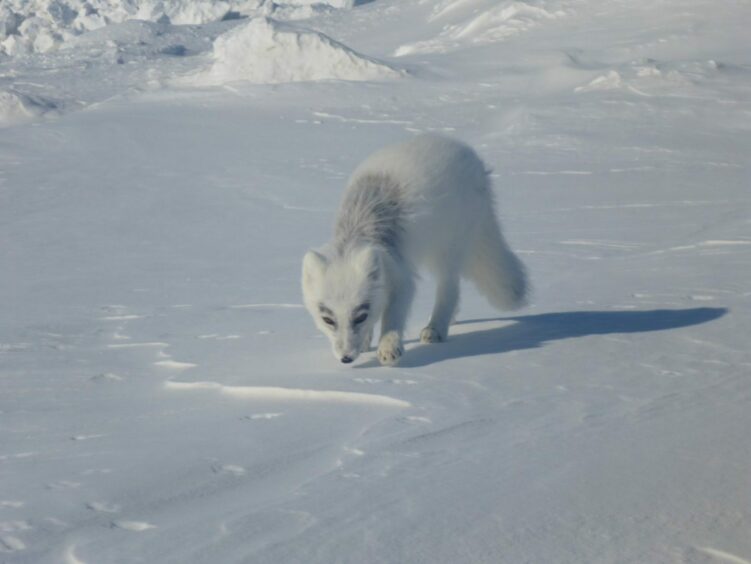A scientist from Aberdeen has travelled to the Arctic to investigate if there could be water – and possibly life – on Jupiter’s moon.
Siobhan Killingbeck, from Cults, and a team of scientists went on a month-long expedition to the Arctic.
The base camp for the expedition was in Resolute Bay, which is an Inuit community and the second most northern town in Canada.
It took a 220-mile twin otter plane ride from base camp to land on the summit of the Devon Ice Cap where the team planned to study.
The Devon Ice Cap is a 4,600 square mile mass of ice.
Dr Killingbeck said: “We were on a little plane with fixed skies. We landed on the ice cap, which was very bumpy. I’m not gonna lie, I was quite excited.
“It reminded me a bit like the summit of the Cairngorms. If you imagine the Cairngorms were covered in ice.
“However, on the Devon Ice Cap in May, it is on average about minus 20 degrees. So a lot colder.”
What were they trying to find out?
The project aimed to find out if there could potentially be lakes underneath the Devon Ice Cap.
Previous airborne geophysical surveys detected anomalies under the ice cap which are thought to be subglacial lakes.
However, the base of the ice cap is 2,500ft thick and is estimated at -14.5C. This means for water to be liquid in the lakes would have to be around five times saltier than seawater.
Dr Killingbeck said: “That’s why this location is very unique. Subglacial lakes in Greenland and the Antarctic are usually freshwater based.
“This makes them compelling targets to ask fundamental questions about the existence and diversity of life in extreme environments on Earth and on other icy planetary bodies in the Solar System, for example one of Jupiter’s moons – Europa.”
Life on Jupiter’s moon?
If the team finds evidence of liquid water underneath the ice cap then there could be the potential for a globally unique microbial habitat.
This could help us understand what type of life may exist on other planets.
Although the conditions are tough, it is much easier to investigate this type of system on our own planet than on Jupiter’s moon.
Nasa have already used the island to test its exploration program to develop new technologies and strategies for future exploration of other planets.
Surviving Arctic conditions
Over the course of the expedition, the team had to deal with tough Arctic conditions.
They underwent training in crevasse rescue, first aid, wilderness, and even firing rifles. Polar bears and arctic foxes live in the cold habitat.
The only way to get fresh water was to dig up snow and boil it in a pot using a gas stove. The team ate 143 freeze-dried dinners over the course of the month.
When will the results be published?
Dr Killingbeck is currently working on the data with Alberta University. She is hoping to get the results published by the end of the year.
The research was part of the Study of Environmental Arctic Change project which is a collaboration between scientists, Indigenous people, and decision-makers to understand the Arctic environmental change.
It was funded by the W. Garfield Weston Foundation, which supports a broad range of charities across the UK.





Conversation